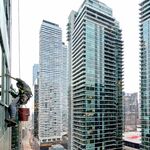kEiThZ
Superstar
I'm not positive you know what an anecdote is, as you seem to be inferring that anecdotes must inherently be untrue. Which is untrue.
And I don't think you get the difference between anecdotes and general statistics.
I'm not positive you know what an anecdote is, as you seem to be inferring that anecdotes must inherently be untrue. Which is untrue.
And I don't think you get the difference between anecdotes and general statistics.
The overall tax burden is also a lot lower for individuals in the US. You ignore that.
While I understand and support more investment, there are times I feel like some of you don't talk to anybody outside this forum....
We need to find ways to fund infrastructure in a manner the public will bare. And to expand the boundaries slowly. The surest way to get arch-conservatives elected would to impose the taxes you propose, IMHO.
But their large health insurance premiums in the U.S. can be a big burden. Or going bankrupt to pay for their medial bills.
We are now the fourth largest city (by population) in North America. It's time we grow up and realize that we are a large city, not a small one.
A myth that needs to go.
http://www.worldatlas.com/articles/largest-cities-in-north-america.html
Toronto is big to be sure. But it's Houston big. Not Chicago big.
A myth that needs to go.
http://www.worldatlas.com/articles/largest-cities-in-north-america.html
Toronto is big to be sure. But it's Houston big. Not Chicago big.
Toronto has no income tax nor a sales tax. New York City has an income tax that range from 2.907% to 3.648%, and a sales tax of 4.5%. Toronto has to beg Queen's Park and Parliament Hill for crumbs.
They also went 70+ years between their last subway extension and the first chunk of the 2nd Ave opening which is mostly federal money. Despite their broader income stream MTA finances aren't in better shape than the TTC.
Not true about the 70 years between their last subway extension. The 7 line was just extended a few years back. And there were others in the previous decades. Not huge extensions but still extensions.
The vast majority of Hudson Yards development isn't even slated to come online for years, and the subway to serve it is already open. Makes you think about our process here, from RL to East Bayfront to Liberty Village and so on.
Here in Toronto it would've been called a $3 billion one-stop boondoggle by its opponents and we would've sat around debating what the "right" option is for two decades.




